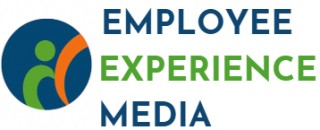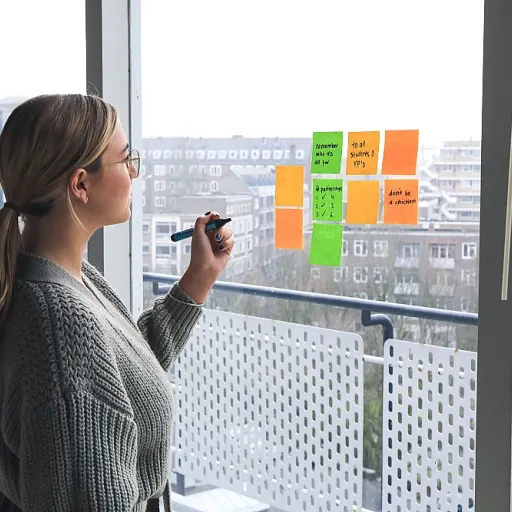
The Evolving Role of HR in Employee Experience
The Changing Landscape of HR Responsibilities
The human resource professional's day-to-day responsibilities have expanded and evolved dramatically over the years, reflecting shifts in the workplace environment. Today, HR professionals are no longer just about hiring, firing, or managing payroll. They play a critical role in shaping the day-to-day experience of employees, impacting everything from culture to morale, and ultimately, an organization's success. HR teams have to juggle a multitude of tasks, such as developing robust employee engagement strategies and adopting new methods to support remote work. By fostering a sense of belonging and inclusivity, they ensure that every person in their organization feels valued. In doing so, they are not just supporting the employees but are investing in the overall growth and sustainability of their company. The responsibilities extend to vital areas like career development and risk management, where HR professionals often have to tailor solutions suited to an organization's unique culture. They are also increasingly tasked with using performance management systems to recognize talent effectively and implement training development programs that pave the way for both professional and personal growth. This evolving role of HR is further evidenced by how they leverage technology to boost their efforts. Tools for effective talent recognition and engagement are essential in today’s fast-paced environment, where the support and well-being of employees are paramount. HR professionals are adept at using social media and other platforms for enhancing employee experience—ways to celebrate milestones or make appreciation days memorable have become integral to their repertoire. More than ever, human resources have become a strategic partner in an organization's journey towards achieving its long-term vision and goals. By ensuring that their teams are equipped to handle the complexities of modern work environments, these resource professionals effectively shape an organization’s competitive edge.Understanding Employee Needs and Expectations
Tailoring Strategies to Meet Employee Aspirations
Understanding what employees truly need and expect from their workplace is pivotal for HR professionals in fostering a positive employee experience. In today's labor market, employees are not just looking for a paycheck; they seek projects that challenge their skills, room for growth, and a supportive and inclusive environment. It's crucial for organizations to shift from a one-size-fits-all approach to a more personalized employee experience. This involves recognizing that every employee brings a unique set of talents, aspirations, and perspectives to the team. Here's how HR professionals can enhance the understanding of employee needs:- Active Listening: Regularly gather feedback through structured performance management sessions and casual check-ins. This helps align organizational goals with individual career development paths.
- Professional Growth Opportunities: Invest in training development that aligns with both the organization's succession planning and personal career objectives for employees.
- Recognition and Appreciation: Celebrating employee contributions, whether through an appreciation day or ongoing recognition programs, reinforces their value within the organization. Notably, creative initiatives like the employee of the month can motivate and engage team members.
- Embracing Flexibility: With remote work becoming more prevalent, providing tailored work arrangements can enhance work-life balance, ultimately boosting engagement and satisfaction.
Creating a Culture of Engagement and Inclusion
Cultivating Engagement and Inclusion as Key Elements
Creating a culture of engagement and inclusion starts with recognizing the fundamental role that human resource professionals play in shaping an employee's day-to-day work life and overall career development. HR teams are vital in nurturing an environment where employees feel valued and appreciated. When an organization prioritizes employee engagement, it leads to higher job satisfaction and lower turnover rates.- Employee Recognition: Celebrating employees' hard work through recognition programs fosters a sense of belonging and motivates them to continually improve. Recognition can take various forms, from public acknowledgments on social media to formal appreciation days like National Professionals Day.
- Inclusive Culture: Building a workplace where every team member, regardless of their background, feels included is crucial for team cohesion. Implementing training and development initiatives focused on diversity can help bridge gaps and encourage collaboration.
- Support and Resources: Providing resources such as professional development opportunities and mental health support demonstrates an organization's commitment to its people. This support extends beyond traditional office settings to accommodate remote work arrangements as well, ensuring all employees have access to necessary tools for their success.
- Flexible Adjustments: In a constantly evolving workplace environment, flexibility in performance management and career paths allows employees to align their personal aspirations with organizational goals effectively.
Leveraging Technology for Enhanced Employee Experience
Embracing Technology to Elevate Employee Experience
In today's fast-paced world, leveraging technology is no longer optional for organizations aiming to enhance employee experience. Human resource professionals are at the forefront of this transformation, using innovative tools to support employees and improve workplace dynamics. From performance management systems to remote work platforms, technology is reshaping how teams operate and thrive.
One of the key ways technology is making a difference is through improved communication. Social media and collaboration tools enable teams to stay connected, fostering a sense of community and inclusion even when working remotely. This connectivity is crucial for maintaining employee engagement and ensuring that everyone feels part of the organization, regardless of their physical location.
Moreover, technology plays a significant role in professional development. Online training and development programs allow employees to enhance their skills at their own pace, supporting career growth and talent retention. This approach not only benefits the individual but also contributes to the overall success of the organization by building a more skilled and adaptable workforce.
Another area where technology is making strides is in recognition and appreciation. Automated systems for celebrating achievements, such as employee of the month programs, help ensure that hard work does not go unnoticed. These systems can be integrated with other platforms to provide a seamless experience, making it easier for managers to acknowledge contributions and for employees to feel valued.
Finally, technology aids in risk management and well-being initiatives. By providing tools for monitoring mental health and offering resources for support, organizations can create a safer and more supportive environment for their employees. This proactive approach is essential for addressing the growing importance of mental health in the workplace.
As human resource professionals continue to navigate the evolving landscape of employee experience, embracing technology will be key to overcoming future challenges and seizing new opportunities. By staying ahead of technological trends, organizations can ensure they remain competitive and continue to provide a positive and engaging work environment for their people.
Addressing Mental Health and Well-being
Prioritizing Mental Health in the Workplace
In today's fast-paced work environment, addressing mental health and well-being is no longer optional for organizations. Human resources professionals play a crucial role in fostering a supportive atmosphere where employees feel valued and understood. This involves creating policies and practices that prioritize mental health, ensuring that employees have access to the resources they need to thrive both personally and professionally.
Implementing Supportive Practices
Organizations can implement several practices to support mental health:
- Flexible Work Arrangements: Offering remote work options or flexible hours can help employees manage stress and maintain a healthy work-life balance.
- Employee Assistance Programs (EAPs): Providing access to counseling and mental health services can be a lifeline for employees in need.
- Training and Development: Equipping managers and teams with the skills to recognize and address mental health issues can create a more empathetic and supportive workplace.
Creating a Culture of Recognition and Support
Recognition plays a vital role in employee engagement and well-being. Celebrating achievements, whether big or small, can boost morale and foster a sense of belonging. HR professionals can lead initiatives to celebrate professional day or appreciation day, recognizing the hard work and dedication of employees. This not only enhances employee satisfaction but also contributes to the overall success of the organization.
Future Challenges and Opportunities
As the role of HR continues to evolve, professionals must stay ahead of emerging trends in mental health and well-being. This includes understanding the unique challenges posed by remote work and developing strategies to support employees in a virtual environment. By prioritizing mental health, organizations can create a resilient workforce capable of navigating the complexities of the modern workplace.













